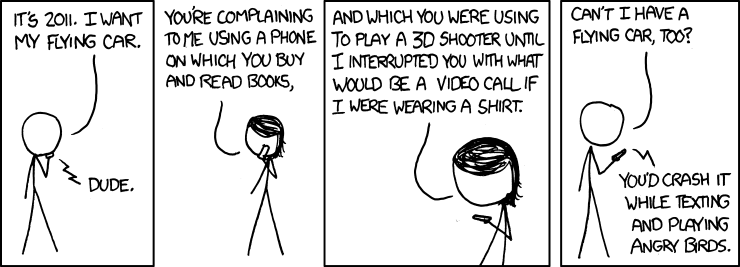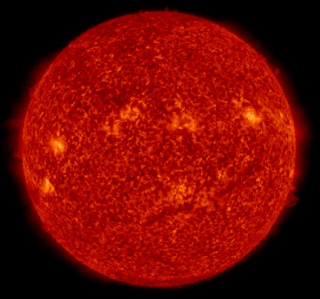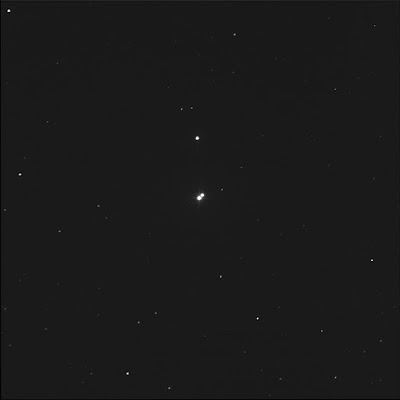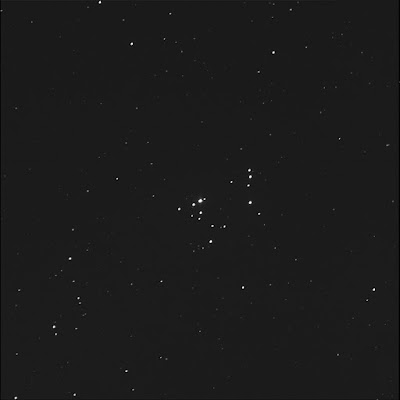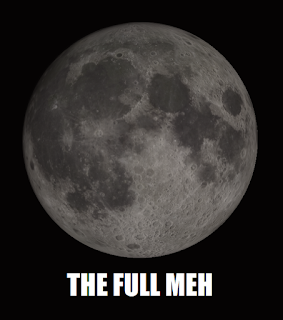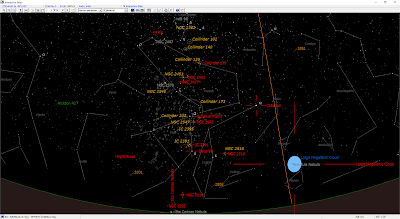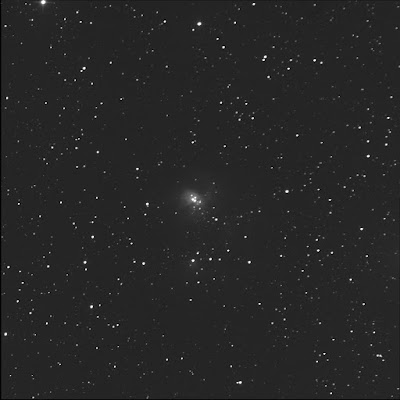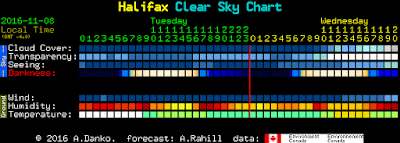Wednesday, November 30, 2016
next NOVA announced
The announcement went out for the next NOVA course. January 16 to February 27, 2017, skipping the Family Day holiday. This time at the Fairview branch of the Toronto Public Library.
checked scheduling feature
Greg shared a link to his blog. He had written a post (first time in a long time). It was on the new scheduling feature in SkyTools 4. It included a screen snapshot too! All right!
Labels:
photography,
planning,
SkyTools
Tuesday, November 29, 2016
understanding dark beasts
Read article at Science News. Researchers, including RASC Toronto Centre's honorary president Roberto Abraham, are finding galaxies devoid of stars. In 2014, they were surprised to find dozens of large but dark galaxies in the Coma galaxy cluster, a well-studied region. Over a thousand have been since found. They may be an old type of galaxy not yet classified and they seem to harbour a lot of dark matter.
The compound Dragonfly telescope system built by Abraham, designed to reduce ghosting and artefacts, was used to effectively find these ultradiffuse galaxies. Big questions remain. How did they form? How old are they? Are they not conducive environments for making stars? Did their star-making gas get ripped away? Did they have stars which got throw out by high spin rates? Or have all the stars yet to ignite?
The compound Dragonfly telescope system built by Abraham, designed to reduce ghosting and artefacts, was used to effectively find these ultradiffuse galaxies. Big questions remain. How did they form? How old are they? Are they not conducive environments for making stars? Did their star-making gas get ripped away? Did they have stars which got throw out by high spin rates? Or have all the stars yet to ignite?
Monday, November 28, 2016
that which we call a rose
Read the article at Astronomy Now on star names. The International Astronomy Union formally approved the names for 227 stars. Up until now, there were only 14 approved names. The Working Group on Star Names web page includes a link to a document for the official stellar monikers.
Labels:
stars
Sunday, November 27, 2016
now, now, Mr Night
That Mr Night. He's such a prankster.
MR NIGHT HAS A DAY OFF - short film from Ignas Meilunas on Vimeo.
MR NIGHT HAS A DAY OFF - short film from Ignas Meilunas on Vimeo.
Labels:
art,
dark adaptation,
fun,
solar
a light revolution
Watched the video entitled Light Pollution - The disappearing darkness at Deutsche Welle (DW). The 43 minute documentary is a good treatment of the infiltration of light at night. It features speakers and researchers in China, Germany, and France.
Let's bring back the stars.
Let's bring back the stars.
Labels:
light pollution,
science
Saturday, November 26, 2016
garage supported
Heard from Tony while he and Grace were at the CAO. He told me he moved the garage circuit over to the generator. Fantastic news. I thanked him.
Labels:
RASC,
volunteering
can we streamline things?
Started the discussion on simplifying and improving the weekend paperwork for CAO supervisors.
Labels:
RASC
on certificates
Briefly but lively discussion, sparked by Alan again, on the National Observing Committee about the ETU, required corrections, new programme ideas, who could help, etc. Added my 2 cents. A good team, we have.
Labels:
double stars,
planets,
RASC,
variable stars,
volunteering
Friday, November 25, 2016
good advice
Enjoyed Uncle Rod's blog article about getting started with astrophotography. Very nice to see. I like how he deliberately addressed the adage often heard, issued the old timers to the rookies. There's no reason why people cannot jump directly into imaging. Keep it simple and have fun.
Labels:
education,
fun,
photography
Thursday, November 24, 2016
new quasar target
From a Sky & Telescope article, I learned that normally faint quasar CTA 102 in Pegasus is currently bright enough to see in an 8-inch telescope. I'll have to add that to the SkyTools 3 list!
Wednesday, November 23, 2016
missed the election
I could not attend, due to weird shift work, the Toronto Centre annual general meeting. I understand it went well with the first election in a long time (or ever?) and that Professor Delaney's talk was fascinating (as always). I learned that national executive director Randy Attwood was present.
Seems I was elected to council again!
Seems I was elected to council again!
Labels:
RASC,
volunteering
Tuesday, November 22, 2016
sent proxy form
Submitted my proxy form to one of the appointed voluntary proxies. First time I've voted at a RASC Toronto Centre AGM.
Labels:
RASC
Monday, November 21, 2016
pinhole workshop set
Ian W is assisting Risa with the astroimaging workshop follow-up session, where they plan to open the pinhole cameras and record the solargraph images. Session is planned for Dec 20. I think I'll be working. Dang.
Location: Yorkville library.
Location: Yorkville library.
Labels:
photography,
RASC
Sunday, November 20, 2016
winter is coming
Ian and I arrived the Carr Astronomical Observatory. A mini work party, we wanted to take care of critical things before the arrival of the cold weather.
First order of business, after our Friday lunch, was to take inventory of parts and supplies needed for our weekend work. Happily, we had everything we needed, from the existing items, and the handful of things Ian had purchased. I made a note to update the small motor inventory in advance of the spring work party.
We performed the generator maintenance. We found the battery heater circuit already energised. Huh. Had I turned it on at the October work party? I couldn't remember. The generator conducted its self-test on time.
Happily we found the generator SLA battery in very good condition. We cleaned and lubricated (with my new tube of MG Chemicals carbon conductive grease) the battery terminals. We wondered if the status warning was due to poor connections.
We lubricated all the outer door locks with Liquid Wrench.
We inspected, adjusted, and tested all the security system switches.
On Saturday, despite the rainy conditions, we worked on all the mowers (except for "Red Dwarf," the old red push mower). Oil and oil filter changes for all. Stabiliser into all fuel. Fuel drained from Green Flash. Petcocks closed on Stargrazer and the Yard-Man and motors run until starved. Batteries removed, transferred to the house, and given a top-up recharge.
To the GBO south-east panel, we replaced the remaining bottom hinge screws.
I replaced the batteries in various critical systems, including smoke and CO alarms, the Davis weather station, and the furnace thermostat. Tested the hard wired smoke alarms. Verified the upper hall bedroom area CO alarm (with 10 year lithium non-removable battery) was functional. Checked the flashlight batteries at the fire-safety stations.
Ian and I helped Denis with his MODL install. In particular, after drilling the appropriate deck boards, we pulled the outer wall conduit up. Ready for electrical and networking ports.
Tested the new reflective tape on one of the snow sticks. Worked well!
Just as an intense winter blast arrived. Good timing.
First order of business, after our Friday lunch, was to take inventory of parts and supplies needed for our weekend work. Happily, we had everything we needed, from the existing items, and the handful of things Ian had purchased. I made a note to update the small motor inventory in advance of the spring work party.
We performed the generator maintenance. We found the battery heater circuit already energised. Huh. Had I turned it on at the October work party? I couldn't remember. The generator conducted its self-test on time.
Happily we found the generator SLA battery in very good condition. We cleaned and lubricated (with my new tube of MG Chemicals carbon conductive grease) the battery terminals. We wondered if the status warning was due to poor connections.
We lubricated all the outer door locks with Liquid Wrench.
We inspected, adjusted, and tested all the security system switches.
On Saturday, despite the rainy conditions, we worked on all the mowers (except for "Red Dwarf," the old red push mower). Oil and oil filter changes for all. Stabiliser into all fuel. Fuel drained from Green Flash. Petcocks closed on Stargrazer and the Yard-Man and motors run until starved. Batteries removed, transferred to the house, and given a top-up recharge.
To the GBO south-east panel, we replaced the remaining bottom hinge screws.
I replaced the batteries in various critical systems, including smoke and CO alarms, the Davis weather station, and the furnace thermostat. Tested the hard wired smoke alarms. Verified the upper hall bedroom area CO alarm (with 10 year lithium non-removable battery) was functional. Checked the flashlight batteries at the fire-safety stations.
Ian and I helped Denis with his MODL install. In particular, after drilling the appropriate deck boards, we pulled the outer wall conduit up. Ready for electrical and networking ports.
Tested the new reflective tape on one of the snow sticks. Worked well!
Just as an intense winter blast arrived. Good timing.
Labels:
RASC,
volunteering,
weather
Friday, November 18, 2016
super bright dog (Blue Mountains)
Noted a bright sun dog as we worked in the garage. It brightened to the point where it was difficult to look at! Amazing.
helped at star party (Collingwood)
Helped Ian W with a private school star party gig. While he delivered his astronomy presentation I set up the solar observing equipment. Roadie.
Atop an equatorial mount, I added an ED100 Sky-watcher 900 mm OTA with Nagler Type 5 eyepiece and Kendrick solar full-spectrum filter. Piggybacked a Coronado PST with Pentax 10.5mm.
In white light, sun spot group 2610 was visible (I had looked it up yesterday). I noticed another group. The big spot was at the 5 o'clock position; the small group was at 11. I tried to flip things in my brain given the mirror diagonal.
In the office, I checked the Spaceweather web site. The new group was not yet numbered.
The view in the PST was surprisingly dim. Partly due to the wispy clouds. Still, I could see filaments and proms! Nice.
Later, I spotted a ring! All right: parhelia! It was coloured too. Sweet.
A faint sun dog on the left briefly appeared.
Beautiful weather. Almost shirt-sleeve. 17°!
The students (and teachers) enjoyed the show.
Atop an equatorial mount, I added an ED100 Sky-watcher 900 mm OTA with Nagler Type 5 eyepiece and Kendrick solar full-spectrum filter. Piggybacked a Coronado PST with Pentax 10.5mm.
In the office, I checked the Spaceweather web site. The new group was not yet numbered.
The view in the PST was surprisingly dim. Partly due to the wispy clouds. Still, I could see filaments and proms! Nice.
Later, I spotted a ring! All right: parhelia! It was coloured too. Sweet.
A faint sun dog on the left briefly appeared.
Beautiful weather. Almost shirt-sleeve. 17°!
The students (and teachers) enjoyed the show.
Thursday, November 17, 2016
watched Peggy again
I caught the Soyuz launch to the International Space Station. Hey! I didn't know Peggy Whitson was heading up again. All right.
A good nominal launch. Did I hear she'll assume command? Fantastic.
A good nominal launch. Did I hear she'll assume command? Fantastic.
Wednesday, November 16, 2016
jumped on national list
Joined the national RASC listserv.
Turned on the daily digest immediately.
Turned on the daily digest immediately.
Labels:
RASC
Tuesday, November 15, 2016
Binary Universe: StarStaX
The December RASC Journal was released to members. Knew it was coming this time. I look forward to reading about Québec City's clocks and sundials! The Imager's Corner article on Resolution looks very interesting.
My software review column Binary Universe featured the StarStaX software.
I wanted members to know about the free and easy to use application for making star trail images or the data files for star trail movies. A nice app for Windows, Macintosh, and Linux users. Evaluation version reviewed: 0.70. Version 0.71 is available.
My software review column Binary Universe featured the StarStaX software.
I wanted members to know about the free and easy to use application for making star trail images or the data files for star trail movies. A nice app for Windows, Macintosh, and Linux users. Evaluation version reviewed: 0.70. Version 0.71 is available.
Labels:
photography,
RASC,
software,
stars
done the budget
Finished the CAO budget for the new fiscal year. Finalised my executive summary. They are in the can. A big thanks to Tony and Phil. Smart people.
Labels:
RASC,
volunteering
Monday, November 14, 2016
gave some suggestions
Ben asked for some help on his C8 SCT telescope on the RASC Toronto Centre Yahoo!Group.
He had tried to observe the Moon. Well. That was his first problem.
He said he could see a bright white disc but no detail. He tried different eyepieces. He tried turning the focus knob each way but it didn’t make a difference. He shared that he had used the telescope several times before without difficult.
Some others jumped in but it didn't feel like the conversation was going in a good direction.
I asked about his setup. I wanted to know if he was using a mirror diagonal. I wanted to know if anything had changed. Had he added or removed any equipment. Was he using extension tubes? Or a Barlow? I discouraged testing with the 8mm. I pointed out that SCTs have a LONG range of focus.
He responded that nothing had changed. And that it had worked fine before. Huh. I was running out of ideas.
He had tried to observe the Moon. Well. That was his first problem.
He said he could see a bright white disc but no detail. He tried different eyepieces. He tried turning the focus knob each way but it didn’t make a difference. He shared that he had used the telescope several times before without difficult.
Some others jumped in but it didn't feel like the conversation was going in a good direction.
I asked about his setup. I wanted to know if he was using a mirror diagonal. I wanted to know if anything had changed. Had he added or removed any equipment. Was he using extension tubes? Or a Barlow? I discouraged testing with the 8mm. I pointed out that SCTs have a LONG range of focus.
He responded that nothing had changed. And that it had worked fine before. Huh. I was running out of ideas.
viewed excellent Moon talk
Professor Paul Delany's talk on CTV about the purported super Moon was amazing.
Our veep! An amazing speaker.
Our veep! An amazing speaker.
shot HD 57102 (Halifax)
The BGO robot imaged HD 57102 aka 19 Lyn for me. Struve labelled it 1062. A multi-star system.
Luminance only, 3 seconds subexposures, 10 stacked shots. FITS Liberator, Paint.NET. North is up; left is east.
On my View Again list to chase down the C companion. Easily spotted in this image although it is extremely faint. It is to the west-north-west of the bright and tight AB pair, almost inline.
SkyTools says the C star is magnitude 10 to 11 but it seems dimmer. The star beyond is GSC 03785-0554 which the software notes as 14 (but is poor quality). The bright pair north of D, with GSC 03785-0041 and GSC 03785-0653, are in the mag 13 range and the C star is similar to those.
I don't remember the telescope I was using on first viewing 19 Lyncis but perhaps C was below the light grasp.
§
According to the Washington Double Star catalogue, C is magnitude 12.8.
§
Discovered that in my SkyTools software, I had never recorded this in the Multiple Stars life list. And it never made it to the View Again. Up to date now!
§
LRGB data combined on 11 May '18.
§
Wikipedia: 19 Lyncis.
Luminance only, 3 seconds subexposures, 10 stacked shots. FITS Liberator, Paint.NET. North is up; left is east.
On my View Again list to chase down the C companion. Easily spotted in this image although it is extremely faint. It is to the west-north-west of the bright and tight AB pair, almost inline.
SkyTools says the C star is magnitude 10 to 11 but it seems dimmer. The star beyond is GSC 03785-0554 which the software notes as 14 (but is poor quality). The bright pair north of D, with GSC 03785-0041 and GSC 03785-0653, are in the mag 13 range and the C star is similar to those.
I don't remember the telescope I was using on first viewing 19 Lyncis but perhaps C was below the light grasp.
§
According to the Washington Double Star catalogue, C is magnitude 12.8.
§
Discovered that in my SkyTools software, I had never recorded this in the Multiple Stars life list. And it never made it to the View Again. Up to date now!
§
LRGB data combined on 11 May '18.
§
Wikipedia: 19 Lyncis.
Labels:
Apogee,
double stars,
photography
Sunday, November 13, 2016
shot HD 41943 (Halifax)
With the stupor Moon about, I asked the BGO robot to image some stars for me.
First up was HD 41943 in Orion. It is the multi-star system also known as (or in) the 37 Cluster. Struve labelled the star systems 848 and 844. Double star observers BAZ and JRN had a go too.
There is a slight tracking problem in the image unfortunately. That's making all the stars not round.
Luminance only, 4 seconds subexposures, 10 stacked shots. FITS Liberator, Paint.NET. North is up; left is east.
On my View Again list. I had noted I thought I might sketch it. This was so to identify all the members. This image should help.
A and B are the brightest members. They are touching. On top of one another. Merged, in part, due to the low image quality. They appear to be equal brightnesses. They mark the top-right corner of the 3 digit.
C, north-west of AB, and inline with AB, has moved a bit. Drawn closer to A and B. It is dim.
D is opposite C, about twice the distance. It is brighter than C.
E is due south of AB. About the same brightness as D.
F is, once again, inline with AB, well beyond D, two and a half times the AD separation. Slightly dimmer than D.
G is nearly due south of D, and east-south-east of E. It is fairly dim.
H is below E, forming a triangle with E and G. It is brighter than G. This is the centre of the 3 digit.
I is well away, south-south-west of A. It is the bottom of the 3 digit, at the end of the arc. The same magnitude as D or E.
J is above or north of I. About the brightness of H.
West of J is the dim K star. This must be the faintest member.
One third the JK separation, further west, is L. L is equal in intensity to J.
M is far away. It is west the E star. E is in the top of the 3 digit; M is the bottom of the 7 digit. It is similar in brightness to H.
N is due west of AB and to the north-east of M. It is bright, perhaps slightly brighter than D. It is the kink in the middle of the 7 digit.
O is inline with M and N at twice the angular distance. O is north-west of AB and curiously inline with F, D, B, A, and C. It is somewhat faint, about the same as H. Maybe less. Closer to G? This is the top-left of the 7 digit.
Above or north of N are three stars almost in a straight line. P is the southern star. P is slightly brighter than O.
Back to the line of 3: Q is in the middle, the brightest. Q looks to be as bright as D.
R is north of Q. It too is inline with O and AB and all the rest. Slightly dimmer than Q. The top-right of the 7 digit. R is slightly closer to Q than P.
O, P, Q, and R are evocative of the pincer stars in Scorpius.
Wow. 18 stars! So the A and B stars were not split in this image but all the other members are obvious and easy.
SkyTools says that the distance between A and B is 2.3 seconds of arc. That's well below the 5 limit I generally consider for the BGO equipment.
So I still need to go back and look, visually, at A and B. I also need to note the colours.
§
The 37 Cluster is also known as NGC 2169 or aka Cr 83 or OCL 481.
§
Processed in colour.
First up was HD 41943 in Orion. It is the multi-star system also known as (or in) the 37 Cluster. Struve labelled the star systems 848 and 844. Double star observers BAZ and JRN had a go too.
There is a slight tracking problem in the image unfortunately. That's making all the stars not round.
Luminance only, 4 seconds subexposures, 10 stacked shots. FITS Liberator, Paint.NET. North is up; left is east.
On my View Again list. I had noted I thought I might sketch it. This was so to identify all the members. This image should help.
A and B are the brightest members. They are touching. On top of one another. Merged, in part, due to the low image quality. They appear to be equal brightnesses. They mark the top-right corner of the 3 digit.
C, north-west of AB, and inline with AB, has moved a bit. Drawn closer to A and B. It is dim.
D is opposite C, about twice the distance. It is brighter than C.
E is due south of AB. About the same brightness as D.
F is, once again, inline with AB, well beyond D, two and a half times the AD separation. Slightly dimmer than D.
G is nearly due south of D, and east-south-east of E. It is fairly dim.
H is below E, forming a triangle with E and G. It is brighter than G. This is the centre of the 3 digit.
I is well away, south-south-west of A. It is the bottom of the 3 digit, at the end of the arc. The same magnitude as D or E.
J is above or north of I. About the brightness of H.
West of J is the dim K star. This must be the faintest member.
One third the JK separation, further west, is L. L is equal in intensity to J.
M is far away. It is west the E star. E is in the top of the 3 digit; M is the bottom of the 7 digit. It is similar in brightness to H.
N is due west of AB and to the north-east of M. It is bright, perhaps slightly brighter than D. It is the kink in the middle of the 7 digit.
O is inline with M and N at twice the angular distance. O is north-west of AB and curiously inline with F, D, B, A, and C. It is somewhat faint, about the same as H. Maybe less. Closer to G? This is the top-left of the 7 digit.
Above or north of N are three stars almost in a straight line. P is the southern star. P is slightly brighter than O.
Back to the line of 3: Q is in the middle, the brightest. Q looks to be as bright as D.
R is north of Q. It too is inline with O and AB and all the rest. Slightly dimmer than Q. The top-right of the 7 digit. R is slightly closer to Q than P.
O, P, Q, and R are evocative of the pincer stars in Scorpius.
Wow. 18 stars! So the A and B stars were not split in this image but all the other members are obvious and easy.
SkyTools says that the distance between A and B is 2.3 seconds of arc. That's well below the 5 limit I generally consider for the BGO equipment.
So I still need to go back and look, visually, at A and B. I also need to note the colours.
§
The 37 Cluster is also known as NGC 2169 or aka Cr 83 or OCL 481.
§
Processed in colour.
Labels:
Apogee,
double stars,
NGC,
open clusters,
photography
super light pollution
What do you do when there's a super bright Moon up and about and everybody's going bananas?!
Shoot double stars, of course!
Shoot double stars, of course!
Labels:
light pollution,
Moon,
photography
2017 CAO planning
Took a look at the draft 2017 RASC Toronto Centre events calendar. Asked the Carr Astronomical Observatory team to consider the work party dates as well as the Open House and Awards Picnic.
finished 2014
Uploaded more RASC Toronto Centre council minutes to the members section of the web site. The 2014 year this time.
Labels:
RASC,
volunteering
Saturday, November 12, 2016
they updated the mount
Heard about the latest mount from Celestron, the CGEM II. USB port in the hand controller. Index marks on the tripod. Saddle that will accept different dovetails. Ability to track past the meridian. Sounds like it will have a higher payload capacity too.
Wow. That sounds rather good.
Wow. That sounds rather good.
Labels:
Celestron
for 9 degrees north
Fired up SkyTools for Risa. She'll be staying in Kochi, India in early December. Oh! 9° above the equator. She might be able to see the Magellanic Clouds and 47 Tucanae. Canopus should be easy.
The question is: What will the light pollution be like?
The question is: What will the light pollution be like?
Labels:
friends and family,
planning,
SkyTools
finished 2015
Uploaded more RASC Toronto Centre council minutes to the members section of the web site. 2015, done.
Labels:
RASC,
volunteering
Friday, November 11, 2016
started budget planning
Last night, Tony and I started working on the CAO budget for next year. I woke up this morning thinking about it. Redid the Excel workbook, made it more granular.
Labels:
planning,
RASC,
volunteering
Thursday, November 10, 2016
no new nominations
Tom, the RASC Toronto Centre secretary, reported that we did not receive any additional nominations for upcoming election. That's too bad. I was hoping that some of our vocal members might join the team to help run the centre.
Labels:
RASC,
volunteering
Wednesday, November 09, 2016
imaged NGC 2194 (Halifax)
The BGO robot imaged NGC 2194 for me. A large open cluster in Orion. One of the RASC Finest NGCs. Once again there are some problems with the data particularly at the top-right.
Luminance only, 60 seconds subexposures, 10 stacked shots. FITS Liberator, Paint.NET. North is up; left is east.
Luminance only, 60 seconds subexposures, 10 stacked shots. FITS Liberator, Paint.NET. North is up; left is east.
Labels:
Apogee,
NGC,
open clusters,
photography
captured NGC 1931 poorly (Halifax)
The BGO robot imaged NGC 1931 for me. An open cluster with some nebulosity in Auriga. One of the RASC Finest NGCs. Some say it is a miniature version of the Great Orion Nebula. Unfortunately, there are a number of problems with the data. I'll have to reshoot.
Luminance only, 30 seconds subexposures, 10 stacked shots. FITS Liberator, Paint.NET. North is up; left is east.
The bright stars in the centre of the open cluster are a multi-star system, HJ 367. A is the bright member to the bottom-left or south-east. South-west is B which is slightly dimmer. To the north-west is C, dimmer still. D is not split cleanly in this poor image; it is merged with B, oriented to the north-west. North-east of the whole group is the dimmest of the five, the E star.
Due south of the cluster and nebula are some bright stars including NSV 2053.
To the south-west is some very faint nebulosity. This is Parsamian 28.
§
Tried to get more data on 11 Dec '16. Received more data on 21 Dec '16.
§
Wikipedia link: NGC 1931.
The bright stars in the centre of the open cluster are a multi-star system, HJ 367. A is the bright member to the bottom-left or south-east. South-west is B which is slightly dimmer. To the north-west is C, dimmer still. D is not split cleanly in this poor image; it is merged with B, oriented to the north-west. North-east of the whole group is the dimmest of the five, the E star.
Due south of the cluster and nebula are some bright stars including NSV 2053.
To the south-west is some very faint nebulosity. This is Parsamian 28.
§
Tried to get more data on 11 Dec '16. Received more data on 21 Dec '16.
§
Wikipedia link: NGC 1931.
Labels:
Apogee,
double stars,
emission nebulae,
NGC,
open clusters,
photography,
reflection nebulae
Tuesday, November 08, 2016
Orion rising
Tony Horvatin shared his very nice short little time lapse centred on Orion.
Made at the Carr Astronomical Observatory. Star Adventurer (at half sidereal), Canon T5i, Rokinon 8mm lens at f/3.5, intervalometer, 500 images, 20 second subs, ISO 3200.
Dietmar Kupke helped with processing. Lightroom, DaVinci Resolve.
Lovely.
Made at the Carr Astronomical Observatory. Star Adventurer (at half sidereal), Canon T5i, Rokinon 8mm lens at f/3.5, intervalometer, 500 images, 20 second subs, ISO 3200.
Dietmar Kupke helped with processing. Lightroom, DaVinci Resolve.
Lovely.
Labels:
Canon,
constellations,
equipment,
photography
delivered NOVA course
At the Yorkville branch of the Toronto Public Library, for the RASC Toronto Centre, I delivered the NOVA session on stars, constellations, and finding your way (with a quick Stellarium demo).
Glad to have Tanya there to help.
Glad to have Tanya there to help.
Labels:
education,
planning,
RASC,
software,
Stellarium
kill switch
Heard from Mr dos Santos. He thanked me for letting him know about the kill switch on the Nautilus power tank. He hadn't noticed it. Once on, he was able to draw power from the external terminals.
Labels:
power
caught the Flame (Halifax)
Been a while. Hello. BGO centred on TYC 04767-1372 1 for me in an attempt to image the Flame Nebula aka NGC 2024. A strange diffuse nebula in Orion. One of the RASC Finest NGCs. Wow.
Luminance only, 60 seconds subexposures, 10 stacked shots. FITS Liberator, Paint.NET. North is up; left is east.
It was challenging getting the robot to acquire this object for it protested about the bright nearby star, Alnitak. At magnitude 1.8, the system refused to take the image even with the star just outside the frame. I had to pan well away. Alnitak aka ζ (zeta) Orionis is about 24 arc-minutes away to the bottom-right or south-west. The image scale is 24. So, a half-frame.
§
I checked the WDS for doubles in the area. None noted.
§
Wikipedia link: NGC 2024.
Luminance only, 60 seconds subexposures, 10 stacked shots. FITS Liberator, Paint.NET. North is up; left is east.
It was challenging getting the robot to acquire this object for it protested about the bright nearby star, Alnitak. At magnitude 1.8, the system refused to take the image even with the star just outside the frame. I had to pan well away. Alnitak aka ζ (zeta) Orionis is about 24 arc-minutes away to the bottom-right or south-west. The image scale is 24. So, a half-frame.
§
I checked the WDS for doubles in the area. None noted.
§
Wikipedia link: NGC 2024.
Labels:
Apogee,
emission nebulae,
NGC,
photography
Monday, November 07, 2016
drafted 4th report
Drafted the CAO committee report for the RASC Toronto Centre council. To the end of the fiscal year. Ready for review, I think...
Labels:
RASC
clear skies at last
Received an email alert from CSAC for my BGO - SMU profile. "Favorable observing conditions at Halifax" at hour 19 for 1 hour. Clouds: 0%. Transparency: Average. Seeing: Good. The Clear Sky Chart graph looked very good the whole night.
All right. It's been almost a month since I received any data.
All right. It's been almost a month since I received any data.
Labels:
photography,
planning,
weather
Saturday, November 05, 2016
next meeting set
The next RASC Toronto Centre council meeting is scheduled for the evening of November 15. I believe it may be held at the David Dunlap Observatory.
Labels:
RASC
surprise at my door
Look what I found at my door?! w00t!
That was quick!
§
Learned that this issue was dedicated to Geoff Gaherty.
That was quick!
§
Learned that this issue was dedicated to Geoff Gaherty.
prepped for NOVA
Prepared for my NOVA teach next week. No word on using the library's computer so I readied my old netbook.
Labels:
education,
RASC,
software,
volunteering
Friday, November 04, 2016
keeping an eye out
Seeing a lot of chatter on Facebook that the RASC Observer's Handbook for 2017 is landing in mailboxes. Looking forward to it.
tested DVR
Tried to resurrect the CAO's first Swann appliance. Dead-ski.
Labels:
equipment,
RASC,
volunteering
I didn't know that
Wow. I didn't know Johnny Carson was into astronomy. Eric shared an item from the RASC national Facebook feed.
Hey! Look at that. A Questar! Nice.
Hey! Look at that. A Questar! Nice.
Thursday, November 03, 2016
axions everywhere
Read an article about a German-Hungarian team of researchers, led by Fodor and Jülich, who used a supercomputer to create a large-scale model of the distribution of dark matter based on gravitational lensing observations. This may help scientists to look in areas where dark matter may be concentrated.
Considering various physical considerations, scientists are leaning to extremely light particles, dubbed axions, being the most promising candidates that make up dark matter. Axions are predicted by an extension to quantum chromodynamics (QCD) and they should be about ten billion times lighter than electrons. And that would require, on average, every cubic centimetre of the universe to contain ten million axions. But dark matter is not spread out evenly; rather it forms clumps and branches of a web-like structure.
Within the next few years, scientists should be possible to confirm or rule out the existence of axions experimentally.
Considering various physical considerations, scientists are leaning to extremely light particles, dubbed axions, being the most promising candidates that make up dark matter. Axions are predicted by an extension to quantum chromodynamics (QCD) and they should be about ten billion times lighter than electrons. And that would require, on average, every cubic centimetre of the universe to contain ten million axions. But dark matter is not spread out evenly; rather it forms clumps and branches of a web-like structure.
Within the next few years, scientists should be possible to confirm or rule out the existence of axions experimentally.
Wednesday, November 02, 2016
learned about weather
Attended the RASC Toronto Centre meeting at the Ontario Science Centre. I was particularly interested in the topic.
Geoff Coulson from Environment Canada gave an interesting talk on our favourite subject—well, after astronomy. I made some quick notes. I was most interested in checking out the NCAR weather web site. Looks like it will be another good resource for analysing future conditions. Also made a note about CarWarn. Maybe I'll sign up in the spring.
Sat with Chris. We chatted about various things.
Confirmed the star field in the desktop image on Ed's laptop.
Chatted briefly with Geneviève. She's most curious how processing my image in Photoshop will compare to the results achieved with GIMP.
Spoke briefly with Ian W about NOVA. Screen size, room brightness, etc. I think I'm all set. Assuming I can borrow their computer.
Returned Jeff's tool wrench.
Chatted with a fellow member from Bradford!
Caught up with Tony.
Received an incredible book from Peter H.
Geoff Coulson from Environment Canada gave an interesting talk on our favourite subject—well, after astronomy. I made some quick notes. I was most interested in checking out the NCAR weather web site. Looks like it will be another good resource for analysing future conditions. Also made a note about CarWarn. Maybe I'll sign up in the spring.
Sat with Chris. We chatted about various things.
Confirmed the star field in the desktop image on Ed's laptop.
Chatted briefly with Geneviève. She's most curious how processing my image in Photoshop will compare to the results achieved with GIMP.
Spoke briefly with Ian W about NOVA. Screen size, room brightness, etc. I think I'm all set. Assuming I can borrow their computer.
Returned Jeff's tool wrench.
Chatted with a fellow member from Bradford!
Caught up with Tony.
Received an incredible book from Peter H.
Tuesday, November 01, 2016
we spotted fragmentation
I read the article at Sky & Telescope's web site entitled ALMA Images Spiral Disk Around Baby Stars. This is amazing. I having been hoping and wondering about this for a long time.
One of the popular targets for amateurs with their telescopes is planetary nebulae. These spherical shells or bipolar structures show the end of a star. A star exploding and bursting, sometimes many times, and throwing of jackets of material and debris. We see these are colourful and beautiful objects in the eyepiece or on the camera chip. They remind us of the cycle of life. Stars igniting and heating orbiting worlds then, millions or billions of years later, burning their last atoms of hydrogen, and throwing chemical elements into the void.
We spot novae and supernovae events with increasing frequency as we improve our scanning and detection techniques. These violent events also contribute to the fabrication of heavier elements in the Universe.
The end of things.
Surely we're in the middle of the motion picture.
It seems to me that we have not, in general, seen the start of many things. We've not seen a solar system form, with rocky and gaseous planets emerging from primordial discs of dust and gas. We conjecture about the birth or start of the Universe. How did the first galaxies form? What made the first stars light up after the cosmological Dark Age? We've not seen a multi-star system form before. Until now.
John Tobin used the Atacama Large Millimeter/submillimeter Array to peer into the disc of the protostar system L1448 IRS3B in Perseus. Using carbon monoxide emissions, they found the bright star orbiting two baby stars. This is the first direct evidence of disc fragmentation. It looks curiously like a spiral galaxy. Tobin went on to show that the system is unstable at the region of the third star and that the outer star will continue to grow as it absorbs material from the system.
One of the popular targets for amateurs with their telescopes is planetary nebulae. These spherical shells or bipolar structures show the end of a star. A star exploding and bursting, sometimes many times, and throwing of jackets of material and debris. We see these are colourful and beautiful objects in the eyepiece or on the camera chip. They remind us of the cycle of life. Stars igniting and heating orbiting worlds then, millions or billions of years later, burning their last atoms of hydrogen, and throwing chemical elements into the void.
We spot novae and supernovae events with increasing frequency as we improve our scanning and detection techniques. These violent events also contribute to the fabrication of heavier elements in the Universe.
The end of things.
Surely we're in the middle of the motion picture.
It seems to me that we have not, in general, seen the start of many things. We've not seen a solar system form, with rocky and gaseous planets emerging from primordial discs of dust and gas. We conjecture about the birth or start of the Universe. How did the first galaxies form? What made the first stars light up after the cosmological Dark Age? We've not seen a multi-star system form before. Until now.
John Tobin used the Atacama Large Millimeter/submillimeter Array to peer into the disc of the protostar system L1448 IRS3B in Perseus. Using carbon monoxide emissions, they found the bright star orbiting two baby stars. This is the first direct evidence of disc fragmentation. It looks curiously like a spiral galaxy. Tobin went on to show that the system is unstable at the region of the third star and that the outer star will continue to grow as it absorbs material from the system.
he found the part
Charles reported in. He found, after a lengthy search, the exact replacement part online, from Phoenix Enterprises. Now he can fix his Star Adventurer. I reminded him about Mouser and Digi-Key.
Labels:
repair
sharing minutes
The web team set up the members area for RASC Toronto Centre documentation such as council minutes and financial reports. In the interest of transparency to our members, we will put future minutes here. And we'll begin loading the past years as well. I started cataloging events for the current year, 2015, and 2014.
Labels:
RASC,
volunteering
Subscribe to:
Posts (Atom)


